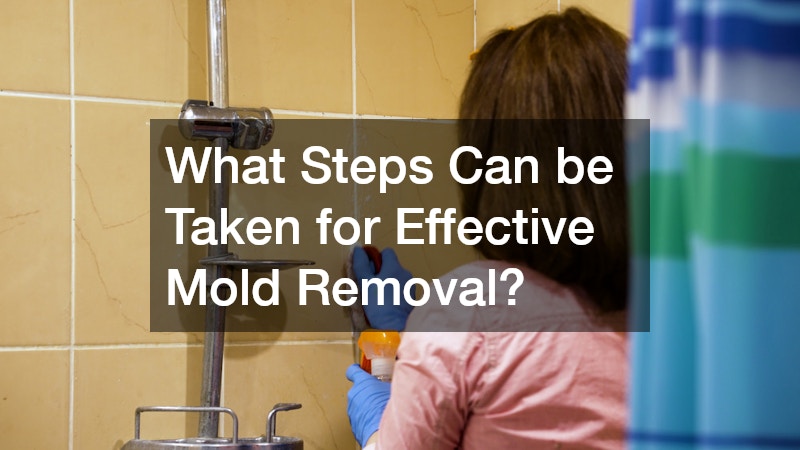Maintaining a healthy living environment is essential for overall well-being, and mold removal plays a significant role in this process. Mold is an insidious problem that can impact both health and home, often growing unnoticed until significant damage has occurred. Tackling mold issues is crucial to ensure that both your health and the structural integrity of your home are preserved.
Health Risks Associated with Mold
Respiratory Issues and Allergies
Mold spores are microscopic and can easily become airborne, making them a significant concern for respiratory health. When inhaled, these spores can trigger asthma attacks, exacerbate allergies, and cause other respiratory problems, especially in children and the elderly.
Effective mold removal is necessary to minimize these health risks and create a safe living environment.
Individuals with existing respiratory conditions, such as asthma, are particularly vulnerable to the effects of mold. Continuous exposure to mold can lead to chronic symptoms like coughing, sneezing, and nasal congestion. By addressing mold issues promptly, homeowners can reduce the likelihood of these health problems and improve overall indoor air quality.
The presence of mold can also worsen other sensitivities and health conditions beyond respiratory issues. Those with skin sensitivities may experience itching or rashes, while others might suffer from headaches or fatigue. Regular inspection and swift removal of mold can prevent these symptoms from taking root, contributing to a healthier living space.
Long-term Health Implications
Long-term exposure to mold isn’t just a nuisance; it can lead to severe health implications over time. Chronic exposure has been linked to neurological issues, including difficulties with memory and concentration. Additionally, prolonged exposure to mold could contribute to chronic conditions affecting various body systems.
Some studies have suggested a potential link between mold exposure and more severe health problems, such as neurological impairments. Symptoms may include confusion, mood swings, and a general decline in cognitive function if not addressed promptly. Consistent mold elimination can mitigate these risks, safeguarding not just physical health but also mental well-being.
While mold may initially seem like a minor problem, ignoring it could lead to serious health consequences. Over time, the body’s immune system can weaken as it continually fights off mold-related irritations. Being proactive about mold removal can prevent these long-term effects, ensuring a higher quality of life.
How Mold Impacts Your Home’s Structure
Damage to Building Materials
Mold is not just a health hazard; it can also wreak havoc on your home’s physical structure. It tends to grow on and consume organic materials, such as wood and drywall, which are essential components in most homes. When left unchecked, mold can weaken these materials, leading to structural damage that requires costly repairs.
Mold infestation often goes unnoticed at first because it thrives in dark and damp areas, such as within walls or beneath floors. By the time visible signs of damage appear, significant harm may have already been done to your home’s core components. Regular inspections and timely removal can save homeowners from expensive restoration efforts in the future.
Tackling mold issues early is crucial to preserving the structural integrity of your home. Addressing leaks and moisture problems promptly can prevent mold growth, protecting your investment. Homeowners can take proactive measures by ensuring proper ventilation and sealing potential entry points for water intrusion.
Aesthetic and Property Value Consequences
Beyond structural damage, mold can have substantial aesthetic implications, affecting both the home’s appearance and its market value. Unsightly stains and discoloration caused by mold growth can make living spaces less inviting and uncomfortable. This problem can deter potential buyers if you’re looking to sell your home.
Mold not only undermines the visual appeal of a home but can also significantly decrease its property value. Real estate agents and potential buyers often view mold as a red flag, indicating possible underlying issues. Taking steps to eliminate and prevent mold can ensure that your home maintains its value and marketability.
What Steps Can be Taken for Effective Mold Removal?
Hiring professional mold remediation services is an effective way to ensure safe and thorough mold removal. These professionals have the expertise and tools necessary to identify mold sources and eliminate the problem efficiently. Moreover, they can advise you on how to address underlying issues like humidity or leaks to prevent future outbreaks.
Professionals follow a systematic approach that includes inspection, containment, air filtration, and cleanup. This comprehensive process ensures that all mold, including hidden spores, is effectively removed from your home. Engaging experts not only guarantees peace of mind but also contributes significantly to maintaining a healthy and mold-free environment.
While professional services might seem costly, they can ultimately save money by preventing extensive damage and future health issues. Homeowners can rely on the expertise of skilled technicians to handle mold safely, avoiding exposure to harmful chemicals or spores. Choosing professional remediation is an investment in both your home and your family’s health.
By understanding the significance of mold prevention and removal, you’re taking significant steps toward a healthier home environment. Whether through professional services or diligent DIY efforts, commitment to maintaining a mold-free home pays off in peace of mind and long-term living quality. With these efforts, homeowners can confidently rest assured that both their home and health are well-protected.



